584
44 We should now try to fill in the dates for the 8
glyphs defined from the type of glyph which I (inspired by the
words of Metoro) have named henua ora:
|
 |
*7 |
 |
|
Aa8-45 |
Aa8-52 |
| Ora.
1. Healthy; to recover, to be saved (from an
illness or a danger): ku-ora-á, ina kai mate, he
recovered, he did not die; ku-ora-á te haoa, the
wound has healed; e-ora-no-á, he is still alive;
ora-hakaou mai, to come back to life; ora ké,
what a pleasant breeze! (lit: how healthy!). 2.
Stick for spinning top (made from the shell of a
sandalwood nut) with which children make the top spin.
Vanaga.
1. December, January. Ora nui, November,
October. 2. To live, to exist, to draw breath, to
survive, to subsist, to be well, healthy, safe, to
refresh, a pause, rest, ease; e ko ora,
incurable; ora tuhai, previous existence; ora
iho, to resuscitate, to revive; ora nui,
vigorous; oraga, life, existence; oraga roaroa,
oraga roaroa ke, oraga ina kai mou,
immortality; oraga kore, lifeless; oraga mau,
oraga ihoiho, vivacious; oraora, oraora
no iti, to be better; hakaora, to draw
breath, to revive, to strengthen, healthy, to sanctify,
to animate, to save, to repose, to cure, to rest, to
comfort, to assuage; hakaora ina kai mou, to
immortalize; hakaoratagata, Messiah, Saviour. 3.
To give water to; kua ora te kevare, to water a
horse; hakaunu ora, to water. 4. To staunch, to
stop the flow of a liquid. 5. To make an escape;
hakaora, to discharge, to deliver, to set free. 6.
To be awake (probably ara); hakaora to
guard. 7. A zephyr, light wind; kona ora,
a breezy spot; ahau ora, agreeable breeze.
Churchill.
Ola, life, health, well-being, living,
livelihood, means of support, salvation; alive, living;
curable, spared, recovered, healed; to live; to spare,
save, heal, grant life, survive, thrive. Ola loa,
long life, longevity, Ola 'ana, life, existence.
Wehewehe.
The explorers reach Easter Island in a
'canoe' (vaka). The name of their craft is given
as Oraorangaru 'saved from the billows' (Brown
1924:40) or Te Oraora-miro 'the living-wood'
(ME:58). The Routledge reference 'Each (man went) on a
piece of wood' (RM:278) also seems to refer to the name
of the canoe. As far back as 1934, the name was no
longer understood. I favor the following explanation:
The difficulty in interpreting the name of the canoe of
the explorers arises from the name segment oraora.
To begin with, the compound form oraora ngaru
should be analyzed in comparison with other Polynesian
compounds, such as MAO. pare-ngaru 'that which
fends off the waves' (i.e., the hull of the boat), TAH.
tere-'aru 'that which moves through the waves'
(i.e., riding the waves on a board). There are several
possible translations for oraora as the
reduplication of ora. Te Oraora Miro can
be translated as 'the pieces of wood, tightly lashed
together' (compare TAH. oraora 'to set close
together, to fit parts of a canoe') and be taken to
refer to the method of construction of the explorer
canoe, while Oraora Ngaru means 'that which parts
the water like a wedge', or 'that which saves (one) from
the waves, that which is stronger than the waves'.
(Barthel 2) |
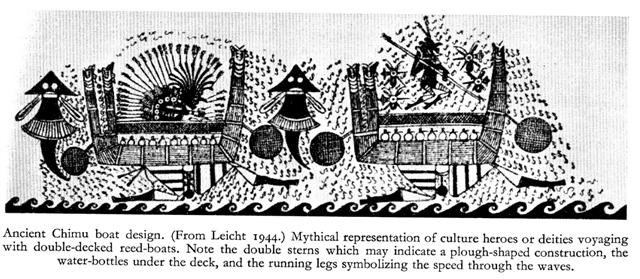
 |
 |
 |
 |
 |
|
Ca14-1 |
Ca14-2 |
Ca14-3 (366 = 392 - 26) |
Ca14-4 |
Ca14-5 |
| Kua tupu te ata i te henua |
|
March 19 (78) |
20 |
21 |
22 |
23 |
|
η Tucanae (363.0),
ψ Pegasi (363.1),
32 Piscium
(363.2),
π
Phoenicis (363.4),
ε Tucanae (363.6), τ Phoenicis (363.9)
*322.0 = *363.4 - *41.4 |
θ
Oct. (364.4)
*323.0 = *364.4 - *41.4 |
Al Fargh al Thāni-25 (Rear Spout)
0h (365.25)
CAPH (Hand) =
β
Cassiopeiae,
SIRRAH (Navel of the Horse) = α Andromedae
(0.5),
ε Phoenicis, γ³ Oct. (0.8) |
Uttara Bhādrapadā-27
(2nd of the Blessed Feet)
/
Wall-14 (Porcupine)
ο Oct. (1.3),
ALGENIB PEGASI =
γ Pegasi
(1.8) |
χ
Pegasi (2.1), θ Andromedae (2.7) |
|
NAKSHATRA VIEW: |
|
Sept 18 (261) |
19 |
20 (80 + 183) |
21 |
22 (Equinox) |
|
10 July (261 - 70 = 191) |
11 (182 +
10) |
12 July (188 + 5) |
13 (= 7 July + 6) |
14 (195, *115) |
|
π Virginis (181.0),
θ Crucis (181.5) |
12h (182.6)
ο Virginis (182.1),
η Crucis (182.5) |
ALCHITA
=
α
Corvi, MA WEI (Tail of the Horse) =
δ
Centauri
(183.1),
MINKAR =
ε
Corvi
(183.7), ρ
Centauri (183.9) |
PÁLIDA
(Pale) =
δ
Crucis
(184.6),
MEGREZ (Root of the Tail) =
δ
Ursae Majoris
(184.9) |
Hasta-13 (Hand)
/
Chariot-28 (Worm)
GIENAH (Wing) = γ Corvi (185.1),
ε Muscae (185.2),
ζ
Crucis (185.4), ZANIAH (Corner) =
η
Virginis
(185.9)
*144.0 = *185.4 - *41.4 |
...
671 (Ab1-1) - 32 (= 215 - 183) = 639.
... 86 (Ab1-1) - 32 = 54 (Aa8-54).
392 - 26 = 366 (Ca14-3) ↔ Aa8-54:
Beyond the closure of summer the Sun would travel back in the
night from the
horizon in the west to the horizon in the east, there to be
reborn again. He went withershins in the night.
|
Ora |
December-January |
→ |
|
↔ |
|
Ora Nui |
November-October |
← |
172 (β Lacertae) - 91 (α
Lacertae) = 81:

650 = 325 + 325.
....
When Julius Caesar established his calendar in 45 BC he set
March 25 as the spring equinox. Since a Julian year (365.25
days) is slightly longer than an actual year the calendar
drifted with respect to the equinox, such that the equinox was
occurring on about 21 March in AD 300 and by AD 1500 it had
reached 11 March. This drift induced Pope Gregory XIII to create
a modern Gregorian calendar. The Pope wanted to restore the
edicts concerning the date of Easter of the Council of Nicaea of
AD 325 ...
There were 12 months in a year but during 4
of these a reversal (transition) took place.
...
One half was beginning with Janus (→
January) and half a year later came Anus.
.jpg)
8 * 29½ = 236.
59 + 236 + 59 = 354.
52 + 260 + 52 =
364.
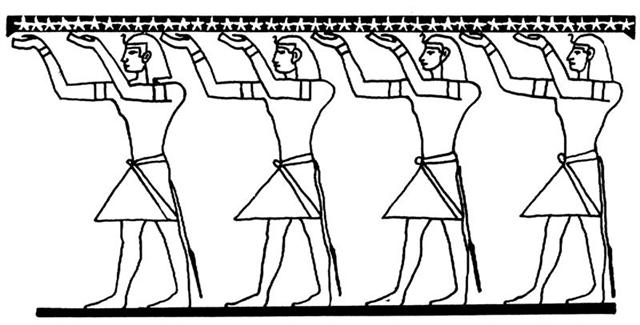
| Moko
1. Lizard; moko manu uru,
figurine of a
lizard (made of wood). 2. To throw oneself on
something, to take quickly, to snatch; to flee into the
depths (of fish); tagata moko, interloper,
intruder, someone who seizes something quickly and
swiftly, or cleverly intrudes somewhere; ka-moko ki
te kai, ka-moko, ka-aaru, quickly grab some food,
grab and catch. 3. To throw oneself upon someone, to
attack: he-moko, he-reirei, to attack and kick.
4. Moko roa: to make a long line (of plantation);
moko poto, to make a short line. 5. Ihu moko;
to die out (a family of which remains only one male
without sons); koro hakamao te mate o te mahigo,
he-toe e-tahi tagata nó, ina aana hakaara, koîa te me'e
e-kî-nei: ku-moko-á te ihu o te mahigo. when the
members of family have died and there remains only one
man who has no offspring, we say: ku-moko-á te ihu o
te mahigo; to disappear (of a tradition, a custom),
me'e ihu moko o te tagata o te kaiga nei, he êi,
the êi is a custom no longer in use among the
people of this island. Vanaga. 1. Lizard. P Pau., Mgv.,
Mq.: moko, id. Ta. moó, id. 2. To stun, to
be dizzy. PS Sa.: mo'o, to be surprised.
Hakamoko, to accomplish. Mokohi, grain,
full-grown berry (mokoi); mokohi haraoa,
grain. Mgv.: mokohe, food. Mokoimokoi,
heart T, kidney. Mokomoko, sharp, pointed,
slender, cape, headland; gutu mokomoko, pointed
lips. Churchill. Mgv.: mokora, a duck. Ta.:
moora, id. Churchill. Mo'o, s. Haw.,
general name for all kinds of lizards. Tah.: mo'o,
lizard. Sam.: mo'o, lizard; v. to be
surprised. Sanskr., mush, to steal, rob, plunder;
muçalî, a
house-lizard; mûsha,
rat, mouse; mosha,
robbing. Zend, mûska;
Pers. and Bokhara, mûsh;
Kurd., meshk;
Afghan, mukhak;
Arm., mugn;
Osset, misht,
rat, mouse. Greek, μυς,
a mouse. Lat., mus,
mouse, rat, marten, sable. A.-Sax., O. H. Germ., Scand.,
mûs, mouse.
Anc. Slav., myshi;
Illur., misc,
mouse. Fornander. |
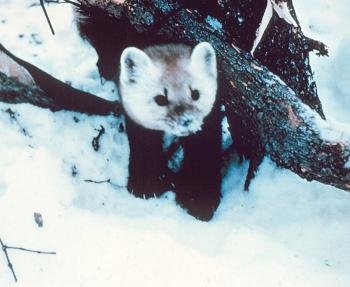

... In China, with Capricornus,
Pisces, and a part of Sagittarius, it [Aquarius]
constituted the early Serpent, or Turtle, Tien Yuen;
and later was known as Hiuen Ying, the Dark
Warrior and Hero, or Darkly Flourishing One, the
Hiuen Wu, or Hiuen Heaou, of the Han dynasty,
which Dupuis gave as Hiven Mao. It was a symbol
of the emperor Tchoun Hin, in whose reign was a
great deluge; but after the Jesuits came in it became
Paou Ping, the Precious Vase. It contained three of
the sieu, and headed the list of zodiac signs as
the
Rat, which in the far East was the ideograph for
'water', and still so remains in the almanacs of Central
Asia, Cochin China, and Japan ...

... If the moral
attitudes of primitive man are hard for the Western mind to
grasp and translate into familiar terms, there can hardly be one
more so than the Maori notion of cooked food as the lowest
thing, the furthest opposite to the sacred, in fact filthy.
For us to divest our minds of Christian
notions of good and evil and substitute the concept of simple
payment, harm for harm (or 'revenge', as we commonly call it
with a misleading moral overtone), is simple enough - perhaps
because every schoolchild has at some time known the latter in
his horrid heart. Even the Maori custom of weeping over friends
when they arrive instead of when they depart has a certain logic
that is not beyond our comprehension. But to enter, against all conditioning, into
the minds of a people for whom cooked food and the act of eating
could carry the overtones of meaning that we in our greater
wisdom attach to their physical opposites and to sex, is a good
deal harder. One has somehow to throw
the mind into a state of being that is radically unlike ours.
Yet if the trick can be done, a light comes on
...
... 'The rays drink up the little waters of
the earth, the shallow pools, making them rise, and then descend
again in rain.' Then, leaving aside
the question of water,
he summed up his argument: 'To draw up and then return what one
had drawn - that is the life of the world' ...
Well, well, well!
|
DRIPPING
WATER: |
 |
 |
 |
 |
|
WELL |
MACAW |
QUETZAL |
RED DEER |
|
9 Ch'en (180) |
10 Yax (Green) |
11 Sac (White) |
12 Ceh (240) |
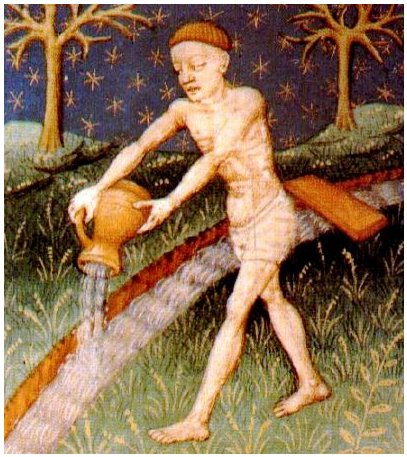
| |
4/1100 Lac. |
4.55 |
49° 28′ N |
22h 22m |
339.4 |
|
Alrediph |
δ Cephei |
4.07 |
58° 25′ N |
22h 26m |
340.5 |
| |
5/1100 Lac. |
4.34 |
47° 42′ N |
22h 27m |
340.7 |
| |
6/650 Lac. |
4.52 |
43° 07′ N |
22h 28m |
341.9 |
| |
α/91 Lac. |
3.76 |
50° 17′ N |
22h 29m |
341.1 |
|
Fomalhaut |
α Piscis Austrini |
1.17 |
29° 53′ S |
22h 55m |
347.8 |
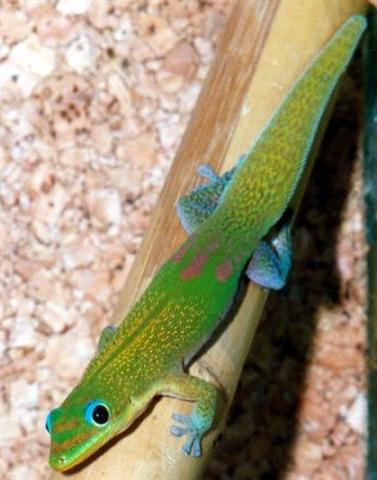
High up the lizard was upside down and quickly
catching flies (spirits of the unborn).
Time-space locations should here be determined from the culminations
of stars in the polar regions.
... Cleaning of the
banana plantations, but only in the morning since the sun
becomes too hot later in the day. Problems with drought. Good
month for fishing and the construction of houses (because of the
long days) ...
... Another year passed, and a man by the
name of Ure Honu went to work in his banana plantation.
He went and came to the last part, to the 'head' (i.e., the
upper part of the banana plantation), to the end of the banana
plantation. The sun was standing just right for Ure Honu
to clean out the weeds from the banana plantation.
On the first day he hoed
Hoe 1. Paddle. Mgv.: hoe, ohe, id. Mq.,
Ta.: hoe, id. 2. To wheeze with fatigue (oeoe 2).
Arero oeoe, to stammer, to stutter; Mgv. oe, to
make a whistling sound in breathing; ohe, a cry from a
person out of breath. Mq.: oe, to wheeze with fatigue. 3.
Blade, knife; hoe hakaiu, clasp-knife, jack-knife;
hoe hakanemu, clasp-knife; hoe pikopiko, pruning
knife. 4. Ta.: oheohe, a plant. Ma.: kohekohe, id.
Churchill. T. Paddle. E hoe te heiva = 'and to paddle
(was their) pleasure'. Henry. Hoea, instrument for
tattooing. Barthel.
the weeds. That went
on all day, and then evening came. Suddenly
a rat came from the middle of
the banana plantation. Ure Honu saw it and ran after
it. But it disappeared and he could not catch it. On the second
day of hoeing, the same thing happened with the rat. It ran
away, and he could not catch it. On the third day, he reached
the 'head' of the bananas and finished the work in the
plantation. Again the rat ran away, and Ure Honu followed
it. It ran and slipped into the hole of a stone. He poked after
it, lifted up the stone, and saw that the skull was (in the
hole) of the stone. (The rat was) a spirit of the skull (he
kuhane o te puoko) ...

| |
(80 + RA
/ 24h * 365¼) |
|
Day of
culmination |
|
Fomalhaut |
March 4
(428, 63) |
*235 |
October 25
(663) |
|
Lacerta |
Febr 24 (420, 55) |
*235 |
Oct 17 (655) |

|





.jpg)












